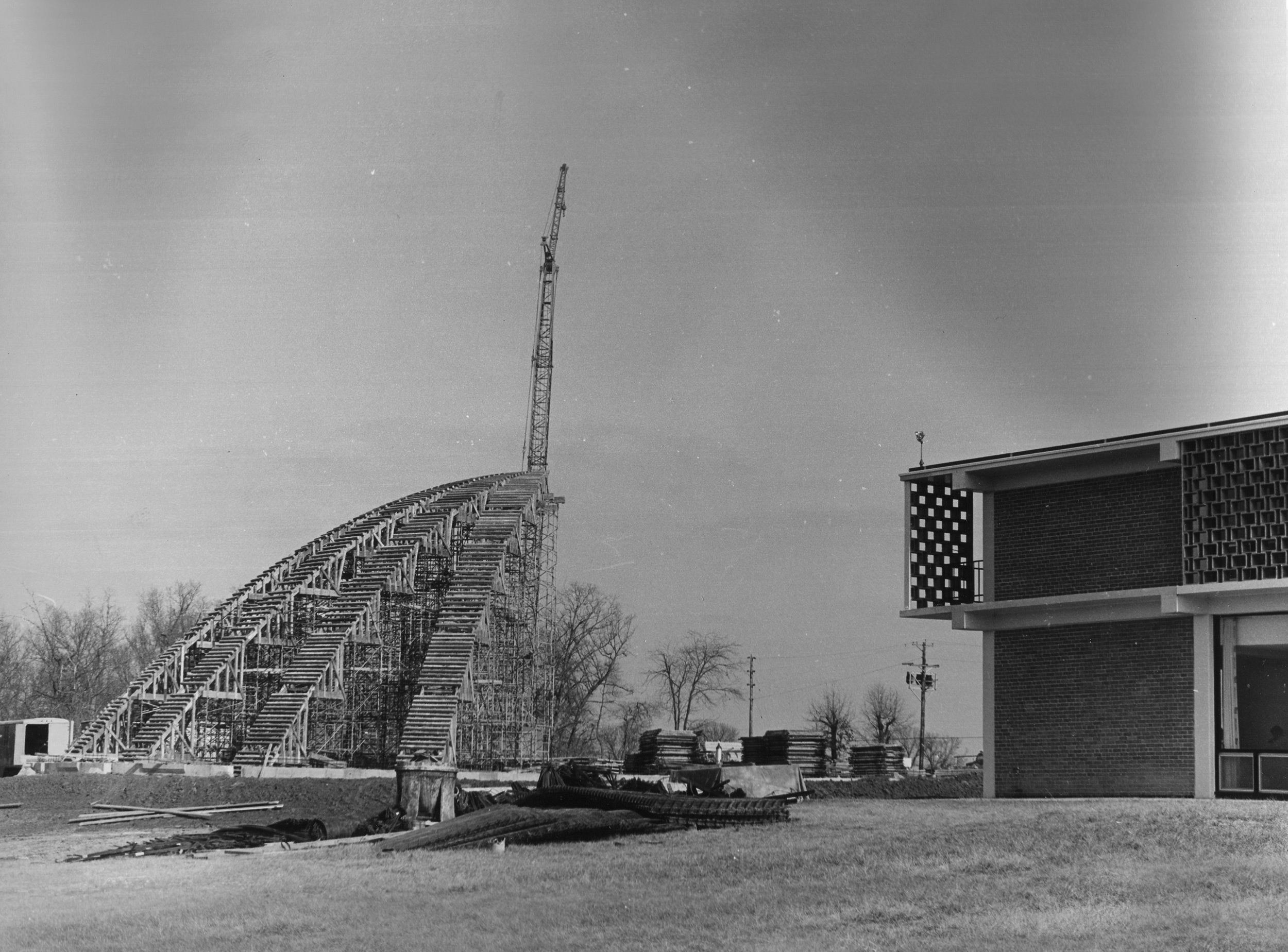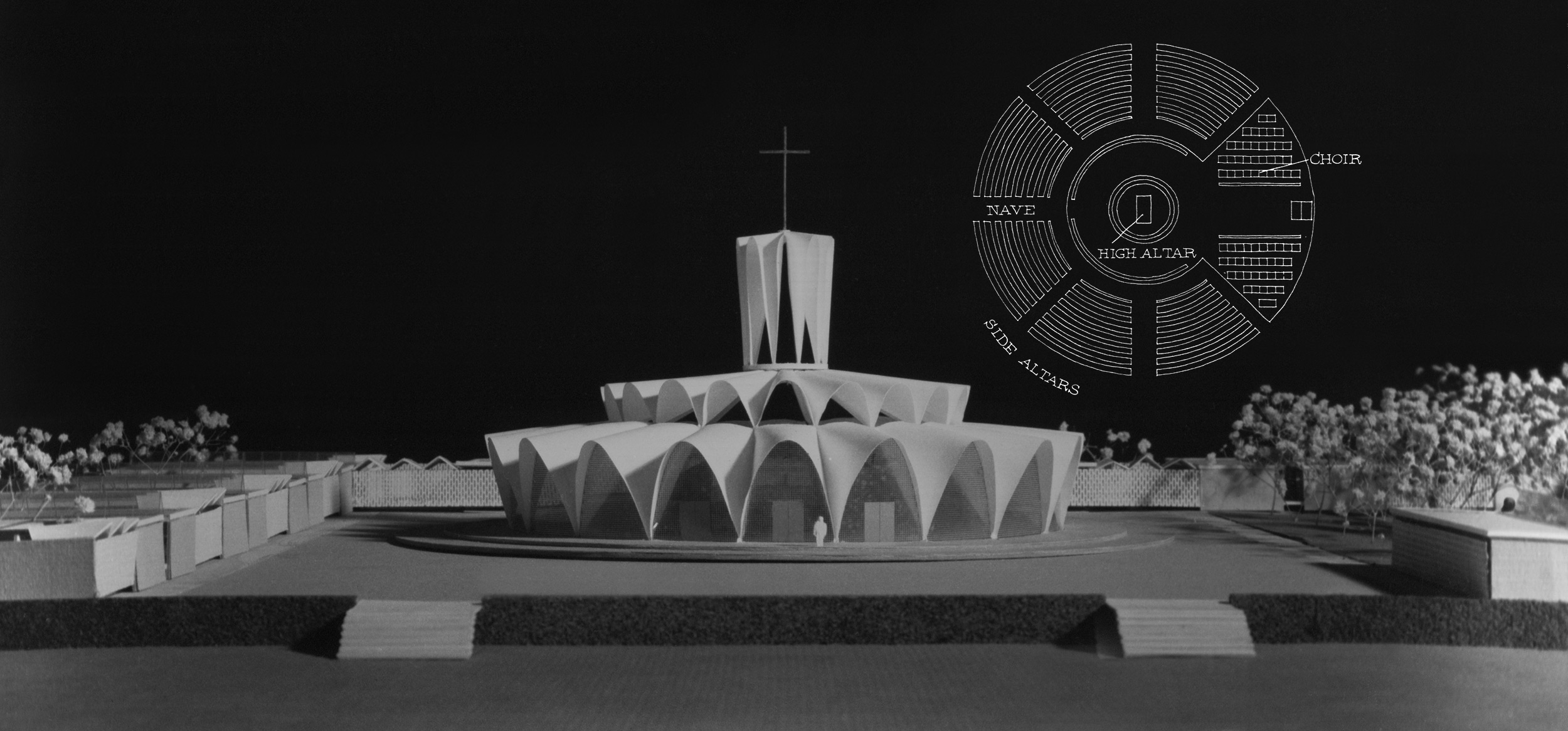
“In 1955, Three English Benedictine Monks came from northern England to found a Preparatory school in Saint Louis. This is their story and ours.”
Monks were settled in England by the V century. Pope Saint Gregory then sent from Rome to England the first Benedictines, namely Saint Augustine of Canterbury, as head of a group of 40 in the year 596. The community from which Saint Louis Abbey descended was probably at Westminster, London in the X century and served as the cathedral for the Royal family’s births, marriages and coronations.
In the XVI century, King Henry VIII suppressed the community and potential monks had to emigrate to Dieulouard, France, whence they were expelled at the French Revolution. The monks returned to Northern England in the late XVIII century and after some wandering, settled at Ampleforth in Yorkshire, where in 1802 they established a Priory and school.
In 1900 they became an Abbey. After WWII a group in St. Louis started to discuss the need for a Catholic boys’ school of high academic standards and willing to prepare boys to enter the college of their choice. Under Mr. Fred Switzer this group produced a manifesto and acquired some land and financial support. Next they needed a staff to run the school. No Catholic school in St Louis had the spare manpower, but Portsmouth Priory (now Abbey), in Rhode Island, had an Ampleforth monk as acting superior, Father Aelred Graham.
The Saint Louis group had some connections with Portsmouth and knew Father Aelred. He said Portsmouth had no spare monks but perhaps one of the English Abbeys might have. Ampleforth, with well over 100 monks was, in fact, looking to make a foundation. A series of meetings which ensued between the Saint Louis Group, incorporated as Catholic Preparatory school for Boys and Father Aelred, resulted in Father Aelred’s being sent to England to invite the English abbeys, especially Ampleforth.
There, he painted a glowing, but mainly accurate, picture of Saint Louis. This led to visits from Saint Louis to Ampleforth and a reconnaissance from Ampleforth resulting in an invitation from the Archbishop of Saint Louis to the Abbot of Ampleforth and an acceptance from the Abbot. This was done, apparently with no legal document; a remarkable example of a trust that existed then and still does today.
Prior Timothy Horner (Left) | Father Columba Cary-Elwes (Center) | Father Luke Rigby (Right)
The Ampleforth monks: Prior Columba, Father Luke and Prior Timothy came by sea on the Queen Elizabeth II to New York, visited there and Washington, and reached Saint Louis on 19 November, 1955, where they were met at their new home by a group of INC, eagerly awaiting supper. But, Father Columba decreed rightly that the group should say Vespers and Compline first. As they left, their treasurer gave Father Luke a check for $10,000—more like $150,000 today—for building and financing the school which was to open in September 1956. In the beginning, there were three of us – and one more monk due to join in 1956 – but no boys, no classrooms, no textbooks, no one to teach Math or Science, no playing fields, but plenty of room to grow. We decided to start simply with a 9th grade of 30 boys and add grades each year until we had grades 7-12. As part of the application process, we held a written entrance exam with papers in English and Math and an interview by the monks. The school has grown impressively in spiritualty and academic rigor. Today, enrollment at the all-boys school stands at over 400.
An important part of the Abbey Church is the unique Hradetzky organ. The organ, located on the west side, is a classical “tracker-action” pipe organ and technically and tonally based on traditional European principles of organ building. Organs of this type are built with a series of features found in the classical organ of Central Europe, but forgotten or discarded in instruments built in the nineteenth and early twentieth centuries until they were recognized anew after the early fifties.
“Whenever you begin any good work you should first of all make a most pressing appeal to Christ our Lord to bring it to perfection”


